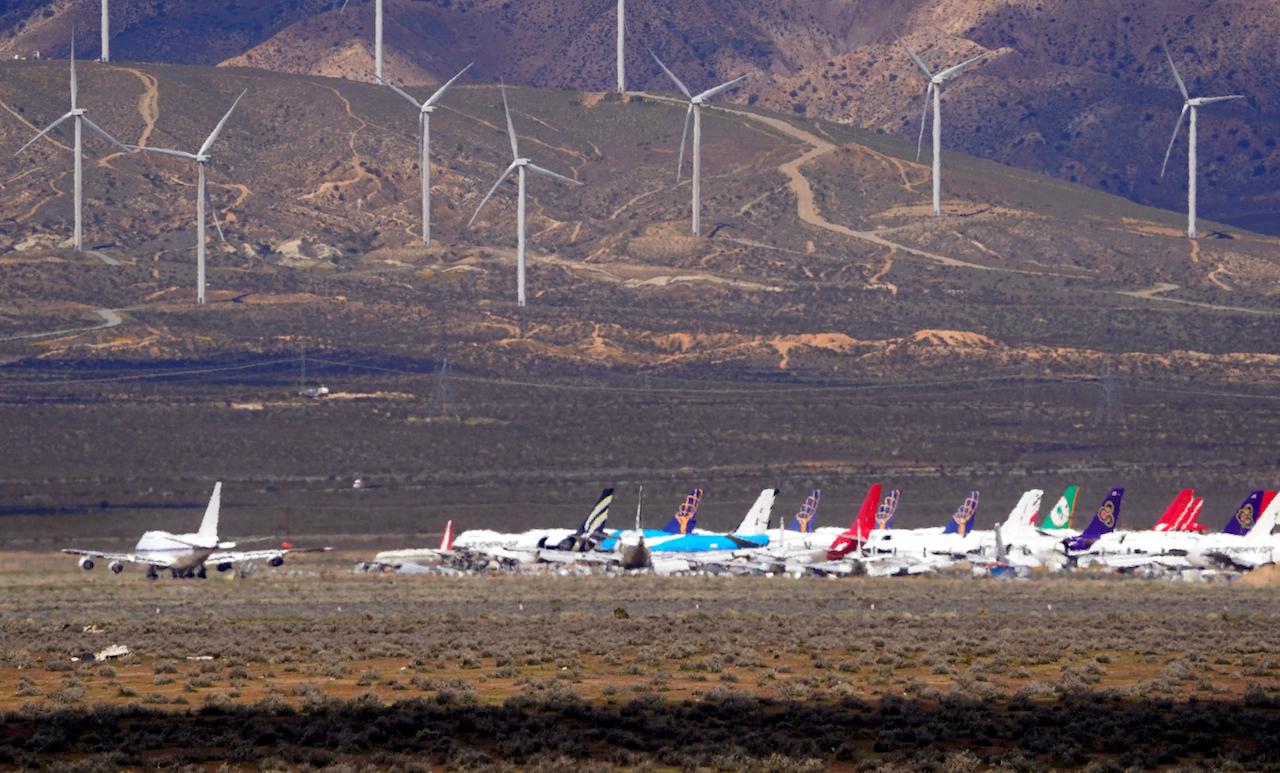Creepy critters cause problems for engineers maintaining superjumbos stored in desert
Qantas estimates the A380s won't return to the skies until 2023, when demand for international travel has recovered.
Just In
Qantas engineers maintaining the airline’s grounded Airbus A380 fleet in California’s Mojave Desert keep finding rattlesnakes living in the landing gear.
The airline has moved its double decker superjumbo fleet to deep desert storage due to the downturn in air travel and the suspension of its international routes.
The dry heat and low humidity is ideal for storing aircraft, but it’s also the home of highly venomous rattlesnakes and scorpions.
Qantas Los Angeles-based engineering manager, Tim Heywood said the snakes love curling up around the warm tyres. As a result, Qantas engineers have to use a “wheel whacker” to try and scare off the reptiles and arachnids before carrying out inspections.
“Every aircraft has its own ‘wheel whacker’, or broom handle, as part of the engineering kit, complete with its registration written on it,” Heywood said.
“The first thing we do before we start any landing gear inspections is to walk around the aircraft stomping our feet and tapping the wheels with a wheel whacker to wake up and scare off the snakes.”
Regular desert-storage maintenance of the world’s largest passenger aircraft includes draining fuel tanks of water caused by condensation, rotating the wheels to avoid flat spots, checking tyre pressures, and inspecting the fuselage and wings for animal nests.
Qantas chief executive Alan Joyce has estimated the A380s won’t return to the skies until 2023, when demand for international travel has recovered.
Recently a Qantas A380 was spotted at Los Angeles International airport, prompting speculation that the superjumbo was about to re-enter service.
However, the plane had flown to the airport just to undergo a gear swing procedure, in which it is jacked up and its landing gear swung up and down several times.
It was the first time the plane had flown in 290 days.
While there is also a desert aircraft storage facility in Australia, near Alice Springs, the Mojave desert location is more convenient for Qantas as the airline has engineers based in Los Angeles, just two hours’ drive away.
Other airlines from the Asia-Pacific region have opted to use the Alice Springs facility, including Singapore Airlines, which has stored several A380s there.
There has been speculation that the pandemic will hasten the end of the A380, which although a great favourite of the flying public, has fallen out of favour with airlines in recent years as they opt for smaller, more fuel-efficient planes.
Air France temporarily grounded its A380s at the start of the pandemic but in May announced it would retire its entire fleet of nine superjumbos immediately.
Manufacturer Airbus has now ceased production of the A380.
The last ever superjumbo to be built left the production line in March to join Dubai-based Emirates’ fleet of 117 A380s, the largest superjumbo fleet in the world.
Subscribe to our newsletter
To be updated with all the latest news and analyses daily.
